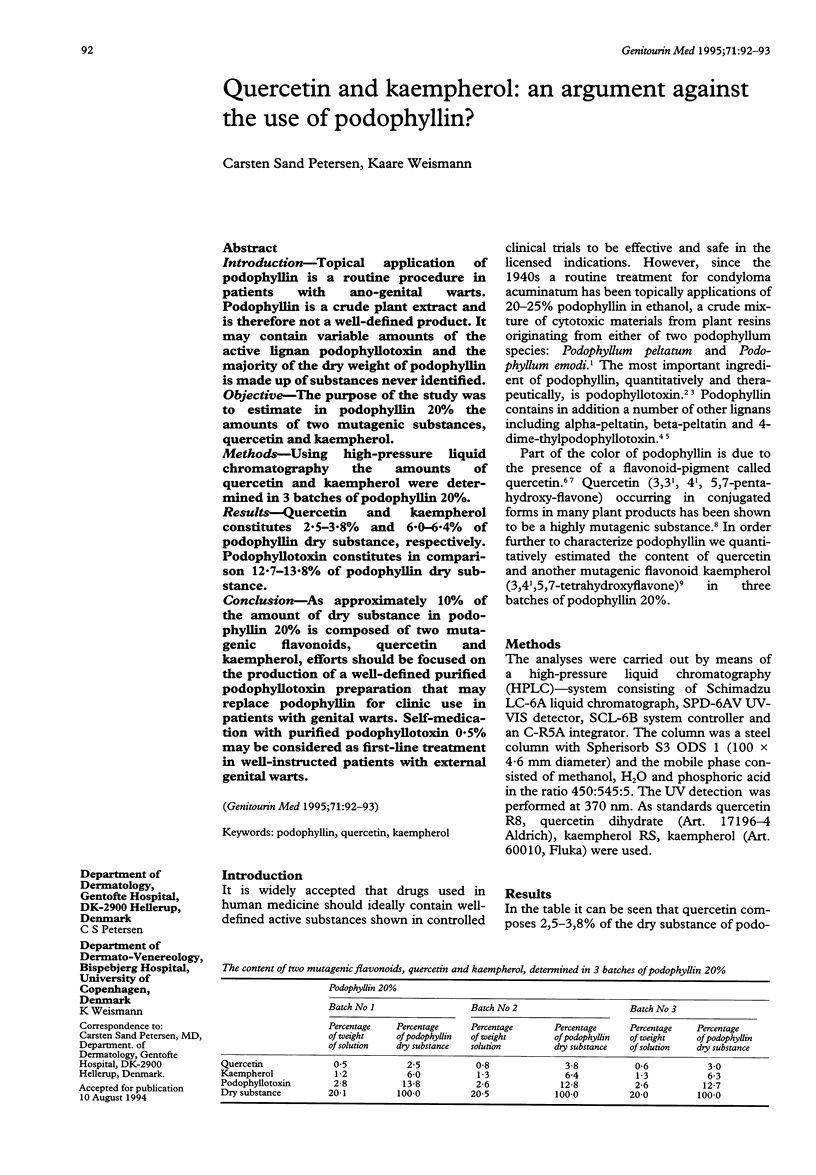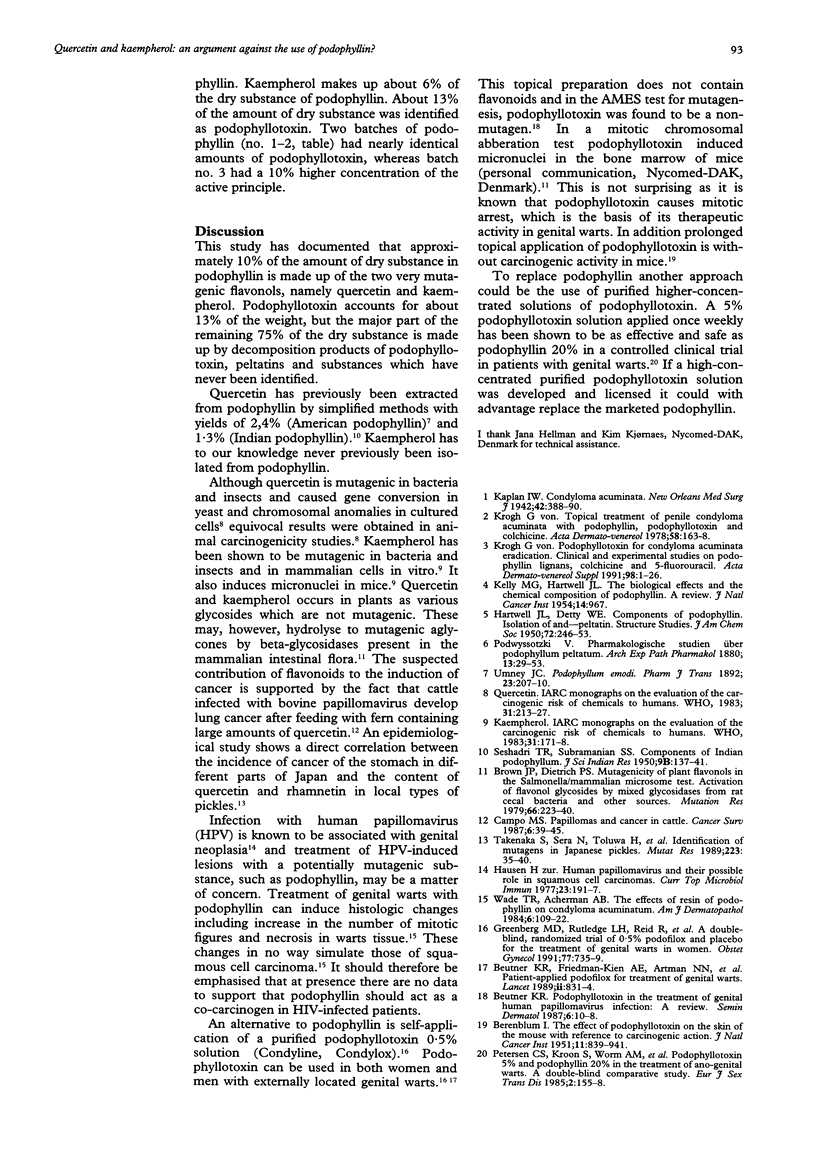Abstract
INTRODUCTION--Topical application of podophyllin is a routine procedure in patients with ano-genital warts. Podophyllin is a crude plant extract and is therefore not a well-defined product. It may contain variable amounts of the active lignan podophyllotoxin and the majority of the dry weight of podophyllin is made up of substances never identified. OBJECTIVE--The purpose of the study was to estimate in podophyllin 20% the amounts of two mutagenic substances, quercetin and kaempherol. METHODS--Using high-pressure liquid chromatography the amounts of quercetin and kaempherol were determined in 3 batches of podophyllin 20%. RESULTS--Quercetin and kaempherol constitutes 2.5-3.8% and 6.0-6.4% of podophyllin dry substance, respectively. Podophyllotoxin constitutes in comparison 12.7-13.8% of podophyllin dry substance. CONCLUSION--As approximately 10% of the amount of dry substance in podophyllin 20% is composed of two mutagenic flavonoids, quercetin and kaempherol, efforts should be focused on the production of a well-defined purified podophyllotoxin preparation that may replace podophyllin for clinic use in patients with genital warts. Self-medication with purified podophyllotoxin 0.5% may be considered as first-line treatment in well-instructed patients with external genital warts.
Full text
PDF

Selected References
These references are in PubMed. This may not be the complete list of references from this article.
- BERENBLUM I. The effect of podophyllotoxin on the skin of the mouse, with reference to carcinogenic, cocarcinogenic, and anticarcinogenic action. J Natl Cancer Inst. 1951 Feb;11(4):839–841. [PubMed] [Google Scholar]
- Beutner K. R., Conant M. A., Friedman-Kien A. E., Illeman M., Artman N. N., Thisted R. A., King D. H. Patient-applied podofilox for treatment of genital warts. Lancet. 1989 Apr 15;1(8642):831–834. doi: 10.1016/s0140-6736(89)92282-4. [DOI] [PubMed] [Google Scholar]
- Brown J. P., Dietrich P. S. Mutagenicity of plant flavonols in the Salmonella/mammalian microsome test: activation of flavonol glycosides by mixed glycosidases from rat cecal bacteria and other sources. Mutat Res. 1979 Mar;66(3):223–240. doi: 10.1016/0165-1218(79)90083-1. [DOI] [PubMed] [Google Scholar]
- Campo M. S. Papillomas and cancer in cattle. Cancer Surv. 1987;6(1):39–54. [PubMed] [Google Scholar]
- Greenberg M. D., Rutledge L. H., Reid R., Berman N. R., Precop S. L., Elswick R. K., Jr A double-blind, randomized trial of 0.5% podofilox and placebo for the treatment of genital warts in women. Obstet Gynecol. 1991 May;77(5):735–739. [PubMed] [Google Scholar]
- KELLY M., HARTWELL J. L. The biological effects and the chemical composition of podophyllin: a review. J Natl Cancer Inst. 1954 Feb;14(4):967–1010. [PubMed] [Google Scholar]
- Takenaka S., Sera N., Tokiwa H., Hirohata I., Hirohata T. Identification of mutagens in Japanese pickles. Mutat Res. 1989 May;223(1):35–40. doi: 10.1016/0165-1218(89)90060-8. [DOI] [PubMed] [Google Scholar]
- Wade T. R., Ackerman A. B. The effects of resin of podophyllin on condyloma acuminatum. Am J Dermatopathol. 1984 Apr;6(2):109–122. doi: 10.1097/00000372-198404000-00002. [DOI] [PubMed] [Google Scholar]
- von Krogh G. Topical treatment of penile condylomata acuminata with podophyllin, podophyllotoxin and colchicine. A comparative study. Acta Derm Venereol. 1978;58(2):163–168. [PubMed] [Google Scholar]


